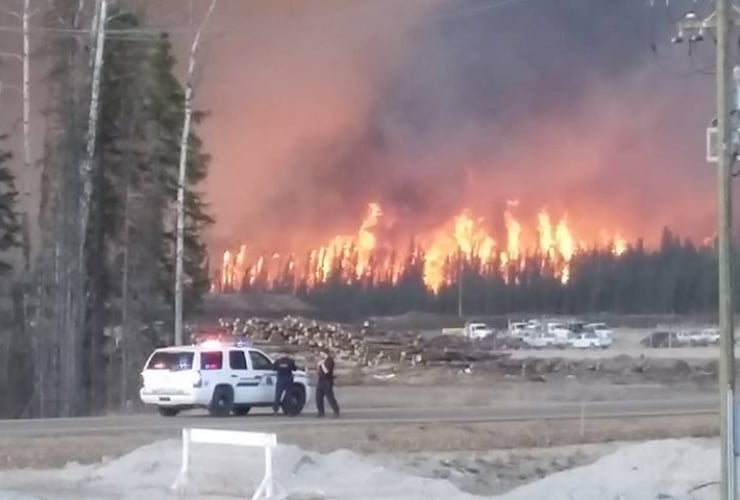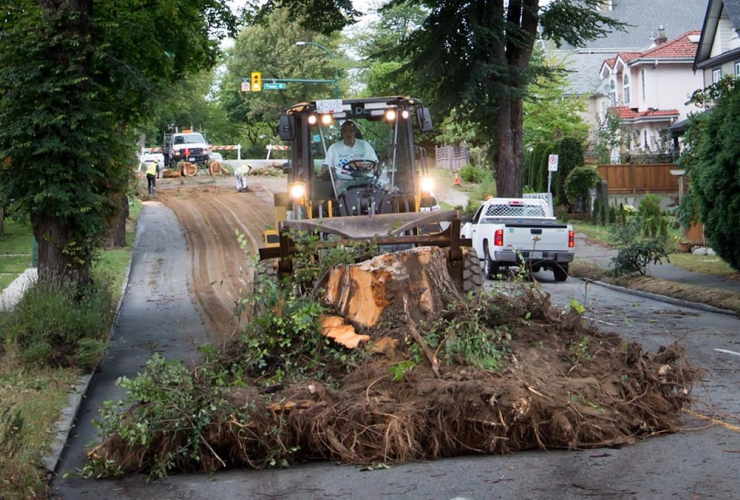After battering the Caribbean, Hurricane Matthew reached the shores of Florida early Friday morning. It's been called the strongest storm to threaten the U.S. coast in over a decade, and has already closed airports, rail service, and turned Florida highways into one-way routes inland. About 1.5-million Florida residents have fled their homes in search of safety.
Rob,right, and his son Robbie survey an uprooted tree in a neighbors yard, a casualty of #HurricaneMatthew pic.twitter.com/LzLRO4D7hO
— Red Huber (@RedHuber) October 7, 2016
Officials are estimating that Hurricane Matthew was responsible for the deaths of at least 1,000 people in the Caribbean earlier this week. According to Reuters, Haiti, which was bludgeoned by Matthew earlier this week, blames 842 deaths on the impact of the storm.
Winds of over 160 kilometres per hour were measured at Cape Canaveral Friday morning, and storm warnings were issued across the state. According to the New York Times, officials have now turned their attention to Jacksonville, which is expected to see serious damage.
HAPPENING NOW: #HurricaneMatthew hits Jax Beach. Ocean waves are slowly overtaking the beach. @FCN2go #FCNStorm pic.twitter.com/ptT2KpswrJ
— Matthew Head (@matt8272) October 7, 2016
The centre of the hurricane was less than 30 miles east-northeast of Daytona Beach as of 12:00 p.m. Florida Governor Rick Scott said that 600,000 buildings have lost power in Florida, while over 20,000 residents have moved to shelters.
Large parts of a hotel coming off in Daytona Beach, Florida. #HurricaneMatthew#Matthew pic.twitter.com/54WZtv0lnV
— Rob S (@RobPulseNews) October 7, 2016
But much of Florida avoided the worst of what the Category 3 storm had to offer as it skidded along the coast without causing massive damage. Now, hurricane and tropical storm warnings are creeping up the eastern coast of the United States as Matthew turns northward.
Heavy rainfall is expected to cause major flooding in coastal Georgia and South Carolina. President Barack Obama issued a state of emergency in Florida, Georgia and South Carolina on Friday, which allows federal agencies to coordinate relief efforts in those states.
Derrick Henry, Mayor of Daytona Beach, told residents to “exercise prudence” in the wake of the storm, saying the worst is yet to come.
Can you hear me? #jacksonville #HurricaneMatthew @wsbtv pic.twitter.com/SoLbxe7GJb
— Nicole Carr (@NicoleFCarr) October 7, 2016
People are really relating to this lone car driving the opposite direction of Hurricane Matthew evacuees https://t.co/idcm6oDBzu pic.twitter.com/4FmmriK0lz
— BuzzFeed News (@BuzzFeedNews) October 7, 2016
The Streets of St. Augustine. #HurricaneMatthew #IThinkWereGoingToNeedABiggerBoat pic.twitter.com/QFaTIg1Qp4
— FTVLive (@FTVLive) October 7, 2016
Hurricane Matthew just offshore Flagler Beach, FL. Max. sustained winds of 120mph, moving NNW at 12mph. Live feed: https://t.co/VESxbmfUoC pic.twitter.com/8wfFpOhw3T
— Surfline (@surfline) October 7, 2016
View of #HurricaneMatthew from space. @NASA @KRLD pic.twitter.com/aXrNVi5oGF
— Amanda Guerra (@AmandaGuerraCBS) October 7, 2016
Western eyewall of #HurricaneMatthew still skirting the coast. Missing major damage by 5-10 miles in some places. Amazingly lucky. pic.twitter.com/o1kQ2Dcsru
— Andrew Freedman (@afreedma) October 7, 2016
This report was made possible thanks to reader subscriptions. Please subscribe today.





Comments